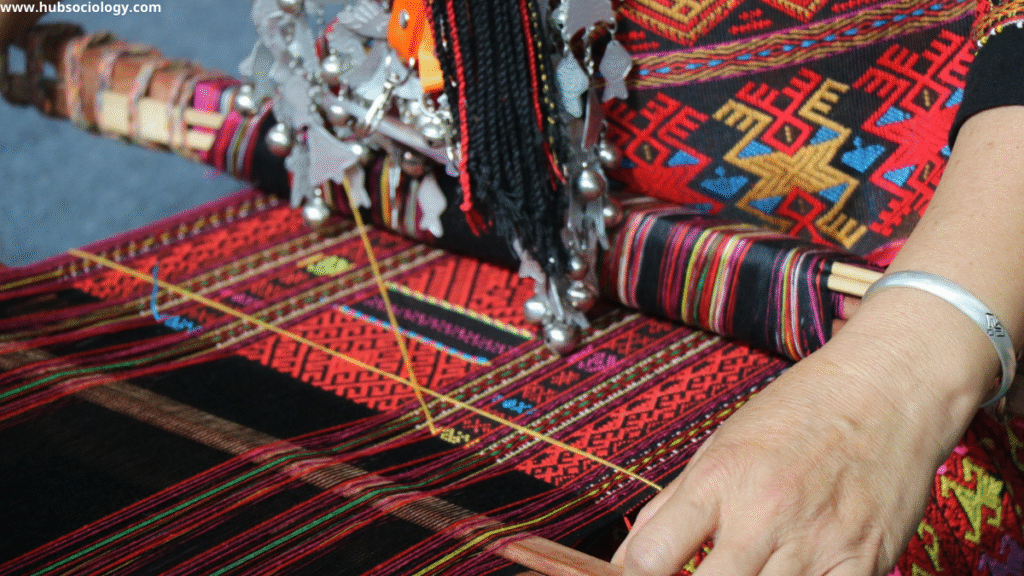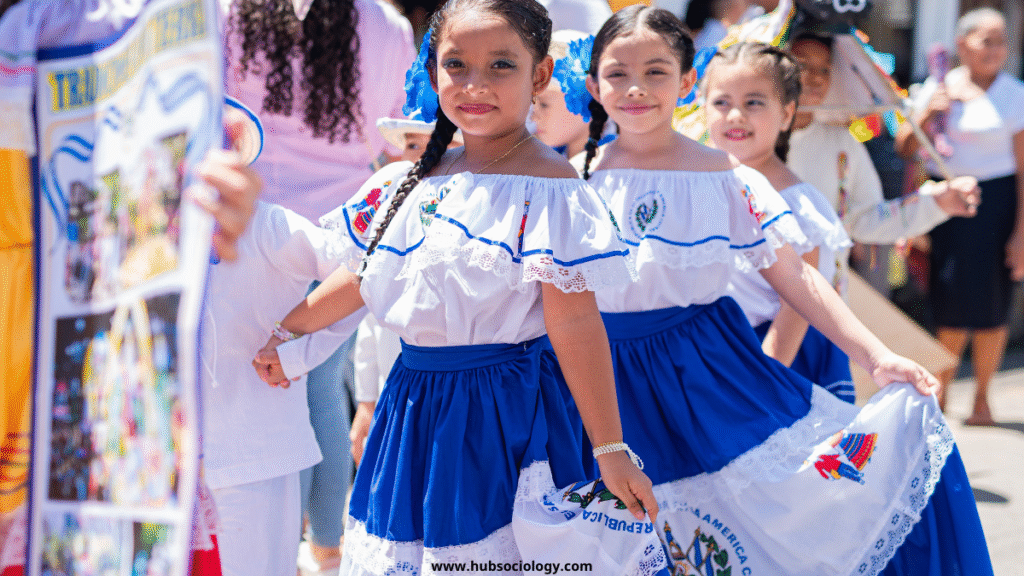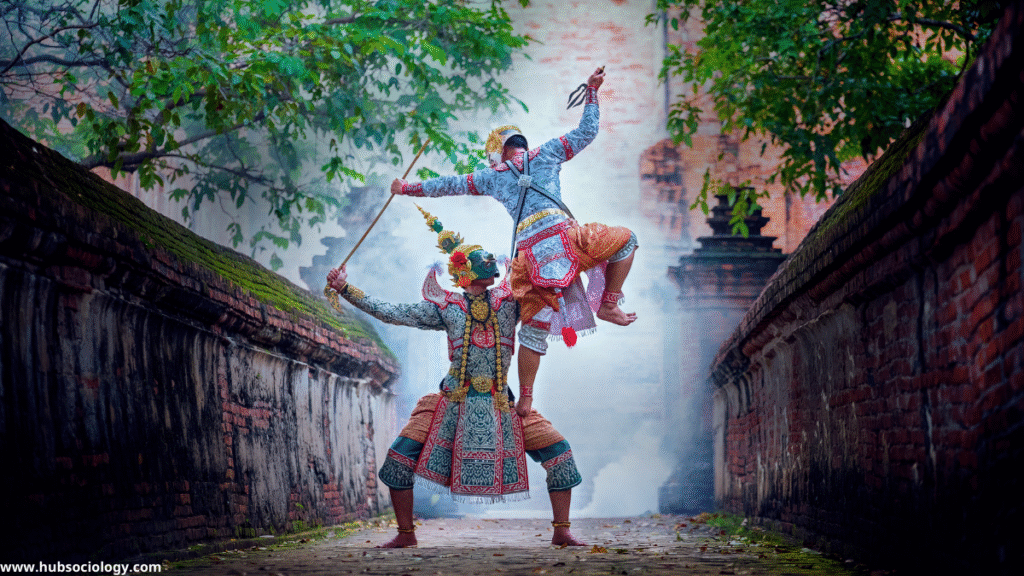Introduction on Folkways and Mores
Every day we move through a dense web of unwritten rules — the way we queue, greet, dress, celebrate, or show respect. These rules are often so ordinary that we barely notice them until someone breaks one. In sociological terms, many of these practices fall under the categories of folkways and mores. Although both regulate social behaviour, they operate at different levels of moral intensity and social consequence. This article unpacks the definitions, distinctions, functions, and contemporary relevance of folkways and mores, illustrating how they shape social order, identity, and change.
Defining Folkways and Mores

Folkways are informal norms governing routine or casual interaction. They include everyday practices like table manners, greetings, dress codes for certain occasions, and small rituals of courtesy. Folkways are context-specific; they can vary across regions, communities, and social groups. Violating a folkway typically results in mild social sanctions — awkward looks, gentle correction, or informal exclusion — rather than legal punishment.
Mores (pronounced “mor-ays”), in contrast, are norms viewed as central to the moral life of a community. They embody fundamental values about right and wrong, social order, and communal integrity. Examples include prohibitions against murder, incest, or betrayal; expectations of loyalty, honesty, and fidelity often fall into this category. Violating mores provokes stronger negative reactions — moral outrage, ostracism, or formal sanctions — and in many societies, some mores are codified into law.
Key Differences: A Comparative Snapshot
- Intensity of Reaction: Folkway breaches elicit mild disapproval; mores violations provoke deep moral condemnation.
- Moral Weight: Mores carry moral significance tied to collective notions of good and evil; folkways are morally neutral or weakly moralized.
- Formalization: Mores are more likely than folkways to be institutionalized or legislated.
- Scope of Application: Folkways vary widely with context and subculture; mores tend to be more universal within a society.
- Function: Folkways smooth everyday social interactions; mores protect communal values and essential social relations.
Functions of Folkways and Mores in Society
Both folkways and mores perform essential roles in maintaining social cohesion and guiding behaviour:
- Social Order and Predictability: Norms create predictable expectations, reducing uncertainty in interactions. When people share expectations (e.g., queuing, greeting), coordination becomes easier.
- Identity and Belonging: Folkways help mark group identity — regional dialects, sartorial choices, or festival customs create in-group recognition. Mores bind people through shared moral commitments, fostering solidarity.
- Socialization: Norms are transmitted across generations, shaping individuals into social beings. Families, schools, and religious institutions inculcate folkways (table manners) and mores (honesty, respect for elders).
- Mechanisms of Control: Norm violations trigger sanctions — informal (shaming) or formal (punishment) — which enforce conformity and deter harmful behaviour.
- Boundary Maintenance: Distinguishing acceptable from unacceptable behaviour clarifies who belongs to the moral community. Mores especially mark the limits of social tolerance.
Examples and Cultural Variation
Consider everyday examples to illustrate the difference:

- A person who eats with their hands at a formal dinner in a setting that expects cutlery may face raised eyebrows (folkway breach). The same act in many Indian homes is perfectly acceptable because cultural folkways differ.
- Adultery, while treated differently across cultures and time, often attracts stronger moral condemnation and legal consequences in some societies — a classic example of mores (or mores-influenced laws).
- Public nudity might be a folkway violation in many urban spaces, but in specific ritual contexts (e.g., certain tribal rites), it is normative. Conversely, murder is nearly universally a violation of mores and is criminalized.
India offers rich terrain to observe the interplay of folkways and mores. Customs around food (vegetarianism in some communities), dress (saree or lungi in particular contexts), and greetings (folded hands) are folkways that vary regionally and by religion. Meanwhile, mores concerning caste-based discrimination, family honor, or respect for elders carry deep moral stakes and produce intense social sanctions when breached. Notably, some mores (e.g., untouchability) have been contested and legally abolished, revealing how social norms can be renegotiated.
Social Control: Sanctions and Socialization
Sanctions are the social mechanisms that maintain normative order. Folkways are usually enforced through informal sanctions: smiles, polite corrections, sarcasm, or social avoidance. Mores command more severe penalties: moral censure, religious excommunication, legal action, or collective ostracism. Importantly, the same behaviour can trigger different sanctions depending on context, status of the individuals involved, and prevailing cultural sensibilities.
Socialization — the lifelong process through which individuals internalize norms — perpetuates folkways and mores. Primary socialization in the family transmits foundational mores (e.g., honesty, respect) while secondary socialization in schools and peer groups refines folkways (e.g., classroom behaviour, slang). Mass media and social media have become powerful agents that both reinforce and transform norms, accelerating the diffusion of new folkways and challenging established mores.
Norms, Law and Changing Morality
The relationship between norms and law is dynamic. Laws often reflect strongly held mores (e.g., prohibitions against violence). Yet legal changes can also influence norms: decriminalization or legalization (of behaviors once taboo) can reshape moral perceptions over time. For example, legal reforms around gender equality, marriage laws, or caste-based discrimination aim to shift mores by altering the institutional landscape and signaling new moral boundaries.
Societal change — urbanization, globalization, technological innovation — disrupts normative frameworks. Global media and migration introduce new folkways that may coexist with, modify, or displace local customs. At the same time, rapid change can provoke moral panic when established mores feel threatened. Policies and social movements often emerge to negotiate these tensions, whether through reform, resistance, or hybrid cultural adaptation.
Conflict Between Folkways and Mores
Not infrequently, folkways and mores can conflict. A folkway in one group may clash with the mores of another. For instance, a young person adopting a global fashion (a folkway) may be perceived as disrespecting family mores. Such conflicts often surface in intergenerational disputes, migration contexts, and multicultural societies. Negotiating these tensions becomes part of the political and moral life of a community. Sociologists study how power, status, and institutions shape whose norms become dominant.
Norm Change: Mechanisms and Agents
How do norms change? Several mechanisms operate:
- Social Movements: Collective action challenges prevailing mores and advocates for new moral codes (e.g., movements for civil rights, gender equality).
- Legal Reform: Laws can both reflect and catalyze norm shifts (e.g., anti-discrimination laws).
- Cultural Diffusion: Exposure to other societies via media, migration, and trade introduces alternative folkways and moral perspectives.
- Generational Replacement: Younger cohorts often adopt different folkways and may gradually reshape mores.
- Technological Change: Platforms like social media create new norms of interaction (e.g., online etiquette) and recalibrate privacy expectations.
Agents of change include activists, intellectuals, politicians, media, and institutions such as schools and courts. However, resistance is common — cultural inertia and vested interests often preserve established mores against rapid transformation.
Practical Implications for Social Policy and Education
Understanding the distinction between folkways and mores is crucial for policymakers, educators, and social planners. Interventions that seek behaviour change must differentiate between low-stakes folkways (which can be shifted through awareness campaigns) and deeply-held mores (which require broader moral dialogue, institutional support, and often legal change). Education plays a central role: curricula that foster critical thinking, empathy, and intercultural understanding can facilitate healthy negotiation of norms in plural societies.
In multicultural contexts — like modern Indian cities — policymakers should be sensitive to normative diversity. Top-down attempts to impose change without community engagement can backfire. Conversely, inclusive policy design that recognizes legitimate variation in folkways while upholding core human rights (a subset of mores anchored in dignity) stands a better chance of sustainable reform.
Conclusion
Folkways and mores are the twin threads weaving everyday conduct and moral order. Folkways lubricate daily interactions and mark cultural particularities; mores anchor a society’s sense of right and wrong. Both are dynamic: they sustain continuity while being continually negotiated through socialization, conflict, and change. For sociologists, policymakers, and citizens alike, appreciating this nuance is essential. It helps explain why some behaviours provoke only a raised eyebrow while others ignite moral outrage, and it clarifies the complex pathways through which societies evolve.

Understanding folkways and mores is not merely an academic exercise — it is a practical tool for navigating diversity, designing fair policies, and fostering a social world where everyday civility and deeper moral commitments coexist, adapt, and flourish.
Do you like this this Article ? You Can follow as on :-
Facebook – https://www.facebook.com/hubsociology
Whatsapp Channel – https://whatsapp.com/channel/0029Vb6D8vGKWEKpJpu5QP0O
Gmail – hubsociology@gmail.com
Topic Related Questions
5 Marks Questions
- Define folkways in sociology with one example.
- What are mores? Give a suitable example.
- Mention two key differences between folkways and mores.
- Why are folkways considered less rigid than mores?
- Give two examples of folkways from Indian society.
10 Marks Questions
- Differentiate between folkways and mores with examples.
- Explain the role of folkways in maintaining social order.
- Discuss how mores act as a mechanism of social control.
- How do folkways and mores vary across cultures? Give suitable illustrations.
- “Violation of mores leads to stronger sanctions than violation of folkways.” Explain with examples.
15 Marks Questions
- Discuss the functions of folkways and mores in society with suitable examples.
- Examine how social change influences folkways and mores. Illustrate with Indian examples.
- Evaluate the relationship between law, folkways, and mores in modern society.
- How do folkways and mores contribute to identity formation and cultural diversity? Explain in detail.
- Critically analyze the role of socialization in transmitting folkways and mores across generations.
